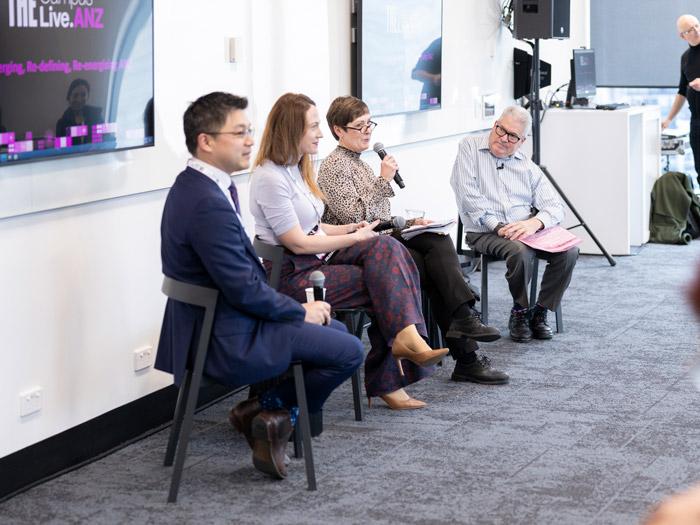Figuring out who to work with isn’t always straightforward. There’s often no shortage of interest, especially if you’re working at a university that’s active in research, innovation or knowledge exchange. Remember, just because a partnership looks impressive on paper doesn’t mean it’s the right fit for your goals.
Choosing the right kind of partnership, not just the right partner, is probably the more important question. Especially now, when we’re being asked to do more with fewer resources and a growing need to show impact in different ways.
- Enhancing research visibility to foster academic-industry partnerships
- Alumni engagement and industry partnerships will keep universities competitive
- Building blocks of university-industry partnerships for positive change
Here are a few practical things we keep in mind when we’re shaping or assessing a collaboration.
Start with what you’re trying to achieve
This sounds obvious but it’s easy to skip this step, especially when you are approached by organisations that have budget or profile. Before jumping into anything, get really clear on what you’re hoping to do. Are you:
- Trying to commercialise a particular piece of research?
- Enhancing student employability?
- Developing short courses or microcredentials that respond to workforce needs?
- Building your university’s civic role in the region?
Your goals should shape the kind of partner you’re looking for, and what kind of relationship you want to build. Without that clarity, it’s easy to end up in a one-sided set-up that doesn’t deliver what you need. Starting with what you’re trying to achieve rather than what activities you can deliver makes space for more innovative ideas for ways of working.
Look for alignment, not just opportunity
A good partner is one that shares some common ground with you; not necessarily in what they do, but in how they work.
- Do they value long-term relationships?
- Are they interested in co-creation?
- Are they up for navigating uncertainty with you?
It’s not always about size or status. Some of the best collaborations happen with smaller organisations, small and medium enterprises, local employers or community-based groups that are agile and genuinely invested in what the university brings to the table.
Remember that acquiring new partnerships is hard work! Growing activity with a few partners you trust and have worked with before is much more efficient.
Understand your options
There’s no single “right” model, and part of the challenge is working out what structure suits the kind of impact you’re aiming for. A few common approaches:
1. Project-based partnerships
A company funds or co-funds a specific piece of research or innovation. Useful for clearly defined problems or technical challenges. Just make sure you’re aligned on IP, timelines and expectations up front.
2. Strategic relationships
These tend to be longer-term, bigger-picture collaborations. They often cut across research, teaching and skills. The best ones are built around shared interests and clear governance, not just good intentions.
3. Commercial and spinout partnerships
If you’re working with industry to take a product or service to market – whether through a licensing agreement, spinout, or joint venture – you’ll need a different kind of set-up. Think carefully about routes to market, risk and incentives for the people involved.
4. Skills and workforce-focused models
These are becoming more important, especially as employers look for ways to upskill staff and tap into graduate pipelines. Partners might help design a short course, buy into your CPD offering or offer placements. These work best when both sides are up for iteration.
5. Place-based and civic partnerships
Some of the most exciting collaborations are local, multi-actor and focused on big social or economic challenges. Universities can play a convening role here – bringing employers, councils and communities into the same conversation. These aren’t always about income, but they often unlock long-term value and visibility.
Spot the green lights (and red flags)
When you’re weighing up a potential collaboration, a few signs are usually good indicators of whether it’s going to be a good experience:
Good signs:
- There is shared ambition and space to shape it together
- You have a point of contact who has time, trust and authority
- They are genuinely interested in impact and outcomes, not just access to facilities
- There is openness about risk, impact and how you’ll learn together
Warning signs:
- It’s all about what you can do for them
- There’s no clarity on IP, costs or expected outputs
- Timelines are unrealistic or decision-making is opaque
- They’re not engaging beyond one very enthusiastic individual
Relationships matter more than transactions
It’s the quality of the relationship that makes or breaks a partnership. Not the contract. Not the press release. People make these things work. So, give them space to build trust, and don’t rush it.
If you need to, start small with a pilot project, a joint event, a guest lecture. Those early steps help you figure out if there’s a solid foundation to build on and they give both sides the chance to learn what it’s like to work together. You also then have a good exit strategy.
And finally, don’t be afraid to say no
Not every offer is the right one, and that’s OK. Saying no to something that doesn’t align with your values, strategy or capacity is often the best thing you can do for you and for the partner. It keeps the door open to future opportunities and avoids the risk of something underwhelming that drains time, energy and money.
The best partnerships feel mutual, meaningful and sustainable. They’re not always the most high-profile – but they’re the ones that last, adapt and deliver on what matters.
Andy Colley is deputy director (innovation) at Birkbeck, University of London.
If you would like advice and insight from academics and university staff delivered direct to your inbox each week, sign up for the Campus newsletter.




comment